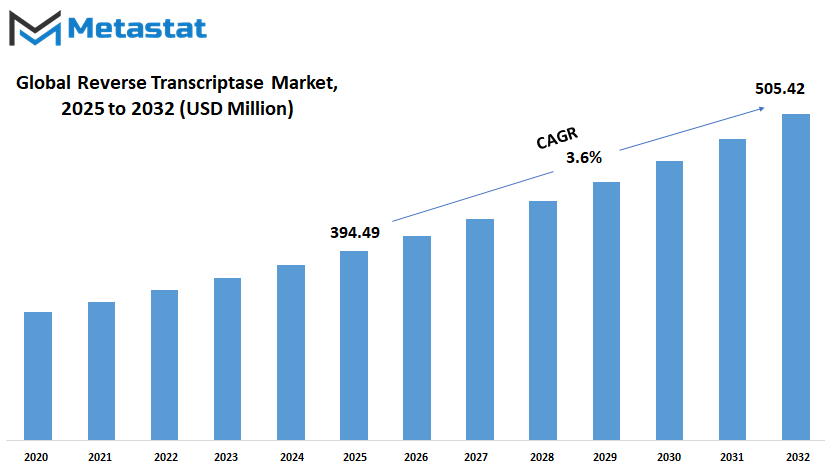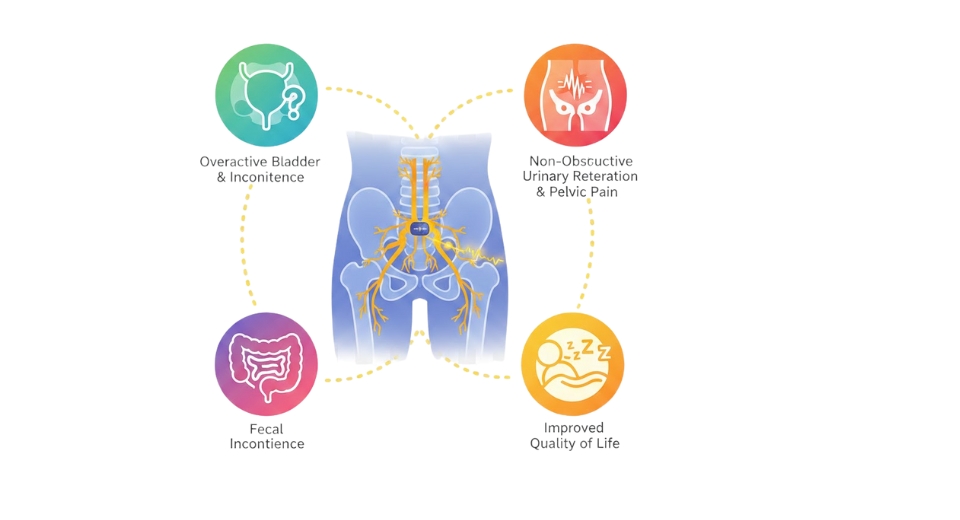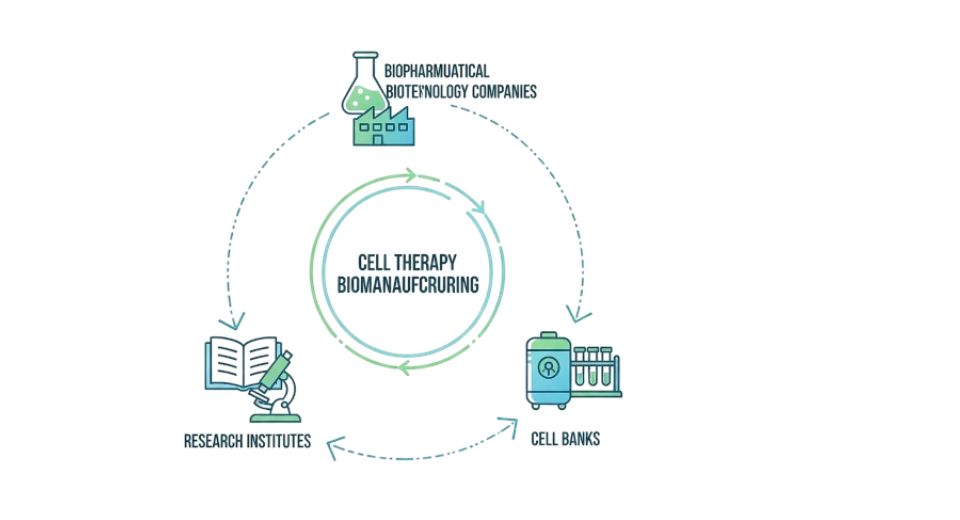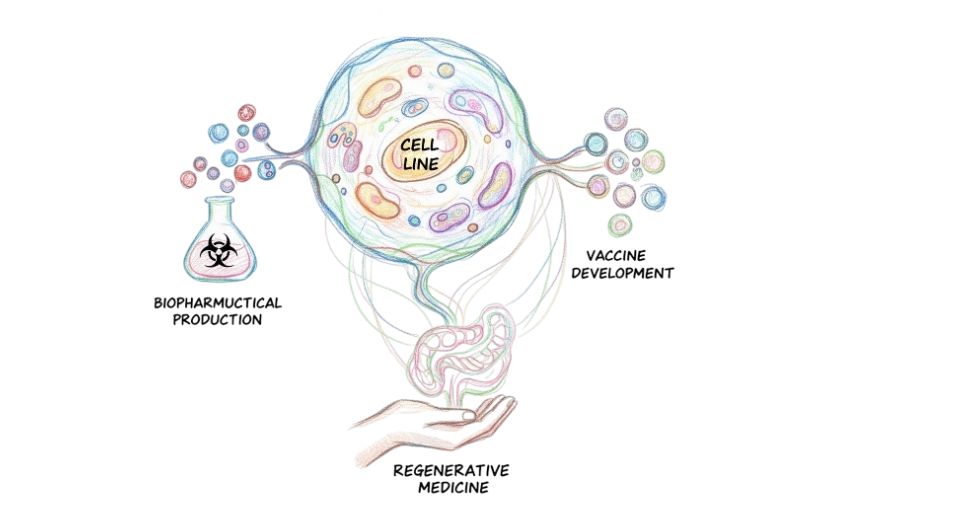MARKET OVERVIEW
The Global Reverse Transcriptase Market has expanded within the Biotechnology and Molecular Biology Industry that would further recognize all research applications on genetic analyses and their linkages to diagnostic testing and therapeutic development. It would focus on producing, distributing, and applying enzymes that convert RNA templates into complementary DNA, which is critical in many laboratory workflows such as gene expression studies, pathogen detection, and viral load quantification. The growing interest in RNA-based research and diagnostics, however, will likely increase the requirement for specialized reverse transcriptase, leading to advancements in its formulation, purity levels, and reaction speed.
Reverse transcriptase enzymes are key reagents in converting unstable RNA into more stable DNA and manipulating it using techniques such as polymerase chain reaction or next-generation sequencing. It will also meet the technical needs of researchers working with RNA samples across clinical, academic, and commercial laboratories. Specific regional versions of the enzyme will be developed to have better thermal stability, short reaction time, and fidelity to perform downstream applications in basic and applied sciences with precision.
The Global Reverse Transcriptase Market will be broad enough to touch virtually all molecular applications. For clinical diagnostics, RT enzymes will be at the center of RNA viruses detection, including those causing infectious diseases. In oncology, the benefit from these enzymes will be the correlation of gene expression patterns with tumor stages of development. Such laboratories will highly depend on highly optimized enzyme kits that are applicable into automated systems to minimize any error introduced by a human and optimize the outputs achievable. There will continue to be ready market customized enzyme solutions for different types of samples for various research objectives.
These will be important markets comprising academic research institutions, contract research organizations, and biotech companies in the Global Reverse Transcriptase Market. These will request reagents that are expected to be consistently comparable even under varied experimental conditions. Innovations will come from enzyme engineering and buffer chemistry to improve the performance of reverse transcriptase even for low-input RNA samples or old templates. Thus, researchers will be equipped with more robust tools that increase the reliability of their gene expression profiling and RNA sequencing workflows.
A lot of overlap will happen between the Global Reverse Transcriptase Market and the pharmaceutical focus on RNA-targeted therapies. Thus, any company producing mRNA-based drugs or RNA interference will need reverse transcription-based analytical tools for validation and monitoring purposes. In purchasing decisions, regulatory compliance will play an important role, with laboratories preferring enzyme products that conform to quality assurance guidelines relevant to clinical testing environments.
Suppliers within the Global Reverse Transcriptase Market will emphasize scale-up production for bulk enzyme formulations to meet large-scale testing needs. Also, support for high-throughput systems is going to become a critical feature, with growing demands for enzymes that can hold the activity under rapid cycles and reduced volumes of reaction. Gradually more standardized reverse transcriptase-based protocols will be implemented in both clinical and research laboratories.
In the future, the Global Reverse Transcriptase Market will reflect ever-growing complexity in molecular workflows while addressing the analytical requirements of scientists engaged in RNA-based research. In effect, the market will anchor itself into developments being witnessed in assay developments and automated lab technologies across scientific disciplines centered on nucleic acid research.
Global Reverse Transcriptase market is estimated to reach $505.42 Million by 2032; growing at a CAGR of 3.6% from 2025 to 2032.

GROWTH FACTORS
The Global Reverse Transcriptase market shall see which will be characterized by steady growth due to the many scientific advances that shall continue to influence health and research. One of the driving forces in this case is a rising demand for molecular diagnostics. The medical field is increasingly utilizing accurate and speedy diagnostic tools, for which reverse transcriptase plays an important role in the detection of viruses and genetic disorders. By converting RNA into DNA, the importance in research further helps medical professionals and researchers understand and illuminate diseases more clearly. This trend is encouraging wider use of reverse transcriptase in clinical settings and laboratories, as increasingly there is reliance on molecular-level testing.
The use of reverse transcriptase is also steadily finding its application in widening research and development activities, which form another reason for the expected growth of this market. Scientists around the world keep investigating how genes behave, change, and influence health. Reverse transcriptase helps in these studies whereby it allows experts to observe how cells respond to different treatments and controlled conditions. As researchers keep advancing in their work, so does the need for more reliable enzymes and tools, thereby boosting the demand for reverse transcriptase products in the coming times.
Despite being anticipated to grow at such a rapid pace, there exist a few challenges to market growth. High-cost pricing of reverse transcriptase kits and reagents can limit them to smaller laboratories or clinics, as most investment made does not tally with returns-also, they are generally limited with regard to resources. Also, the more stringent optimizations and standardizations of these tools prove hurdles for both new and experienced users. The tools will then need considerable time, precision, and trial/error to ensure they work properly over different systems/sample types, thus adding yet another dimension to the difficulties involved.
Going forward, point-of-care testing is increasingly prominent. It will provide scope for conducting medical tests very close to the places of patients and mostly instant results. As such testing strategies get translated in practice, there will be probably a higher requirement for simple, portable, reverse-transcriptase-based solutions. This transition provides solid space for innovation and reconfiguration of products for a much wider exposure by companies. User-friendly and less costly options would go a long way toward bridging the existing gap between the said demand and the barriers faced by many in the field today.
In the years ahead, technology becoming ubiquitous in healthcare and science raises the possibility in the Global Reverse Transcriptase market to satisfy old demands as well as emerging ones that the future holds for diagnosing and genetic research advances.
MARKET SEGMENTATION
By Product Type
The Global Reverse Transcriptase market is going to witness a steady growth in the years to come due to the varied applications it can be put into Genetics and Biotechnology. Based on the product types, the reverse transcriptase market is further divided into the MMLV Reverse Transcriptase and AMV Reverse Transcriptases. Each has its own distinctive role in scientific research and medical development. The enzyme's utility in converting RNA into DNA makes it more interesting in laboratory and research institutions, especially with increasing global consciousness about discovering solutions in the genetic science field.
MMLV Reverse Transcriptase is derived from the Moloney Murine Leukemia Virus and is a very commonly used product because it extends the length of the DNA strand produced from RNA. The use of the enzyme is needed where the synthesis of the entire cDNA needs to be created. AMV Reverse Transcriptase, derived from the Avian Myeloblastosis Virus, is preferred because it is thermally competent, which reduces many secondary structural problems associated with RNA. Therefore, the expectation and requirements of these types will intensify with the emergence of newer scientific methods demanding much more efficient and specific reverse transcription procedures.
Gradually, the tools and techniques associated with molecular biology are becoming more sophisticated, hence more widely acceptable. This will naturally be a reason for the increase in demand for trustworthy reverse transcriptase products. The future will witness disease identification, personalized medicine, and RNA sequencing research remaining supported on such enzymes. Scientists are always searching for ways to improve experiment accuracy and speed, and viable reverse transcriptase options would help to achieve this goal.
Looking broadly, the Global Reverse Transcriptase market may benefit in the coming years from advancements in artificial intelligence and automation. These might be the tools with which new uses for these enzymes are discovered or performance is improved. As laboratories become faster and more accurate, so will likely reverse transcriptase products become more integrated into those changes. Companies engaged in this field will also focus on sharpening their products to be up to the challenge of the evolving needs of research and diagnostics.
These tools will be useful for researchers in the future, when medical history becomes increasingly advanced and personalized. It is evident that many will be forthcoming regarding higher sales and improved versions of such products in terms of use in learning comprehension of genetic material by scientists.
By Application
The reverse transcriptase market is destined to undergo a gradual increase owing to the future contributions of biotechnology and genetic research that promise and command the future in the field of medicine and diagnostics. The enzymes that convert RNA to DNA form an important part in every scientific and medical application. As new challenges appear in health care and the demand grows for more precise and reliable testing, the use of reverse transcriptase will become even more relevant in laboratory work and clinical solutions.
There is reverse transcription polymerase chain reaction, which is one of the applications of reverse transcriptase. By this means, a gene is turned into its complementary DNA so that it can be amplified as well as analyzed. It is not just important in laboratories but also important in diagnosing infections as well as studying genetic disorders. Understanding the RNA sequences accurately and within a very short time contributes to more rapid and accurate decisions on the part of scientists, especially in situations where the resource of time and accuracy is valued most.
The other main application of reverse transcriptase is in cDNA synthesis. By using this, scientists can make copies of genetic material in a more stable form for further use. For example, during discovery, the cDNA synthesis will prove to be more prominent with exploration in human genetics and strategized improvement in treatment. This will probably expand as more laboratories take up the advanced methodologies in gene studies and targeted therapeutic designs.
In fact, improved applications in molecular cloning may be predicted through reverse transcriptase. Scientists are able to obtain and replicate genes in an uncomplicated manner from RNA to DNA by using this enzyme. This likeability guarantees the production of genetically engineered cells and organisms that can be employed in medicine, agriculture, and industry. The procedure has in fact opened new possibilities for scientific innovation and will remain a key part in future research strategies.
Another important application of reverse transcriptase is next-generation sequencing, which opens up almost all possibilities for a detailed reading of deoxyribonucleic acid material. The role of transcriptase is to transcribe RNA samples to be read and analyzed through sequencing technologies. Next-Generation Sequencing on its behalf is pretty likely to become usual as research will start implicating more patient care because of the increasing demand for personalized medication and precision diagnostics. Thus, so high will be the demand for quality reverse transcriptase.
In the long run, the Global Reverse Transcriptase market is expected to prosper in handling advances in genetics and increased funding for scientific research, coupled with the rising need for accurate molecular tools. Whatever is happening thus far will keep reverse transcriptase a laboratory tool for modern science and medicine.
By End User
During the next several years, however, slow and steady growth along scientific advances and increased interest in disease detection and genetic research would give much impetus to the Global Reverse Transcriptase market. The enzyme is rather important to understanding genetic material because, with greater focus on the understanding of viruses and the importance of RNA in human health, reverse transcriptase is of much importance in the study of gene material. In this respect, this enzyme really helps in the conversion of RNA to DNA, which is an important step in many medical or scientific applications. Howell, the focus of the future of this market will consist of the ways in which different sectors accept and apply the relevant technologies.
Reverse transcriptase is sure to gain more utility in hospitals and diagnostic laboratories in the near future for a quicker as well as more accurate diagnosis of disease. Novel viruses keep emerging and the older viruses are getting mutated; hence, such a stream will witness high demand for precision diagnostics. The infrastructure will rely on technologies for molecular-level identification and reverse transcriptase shall make an important contribution here. The enzyme will continue to be in great demand for virus detection by laboratories using PCR and other technologies.
Pharmaceutical and biotechnology companies will also influence the direction of the Global Reverse Transcriptase market. These companies will probably continue to use this enzyme in drug development, particularly for targeting diseases that involve RNA viruses. Since RNA plays a role in various illnesses, including cancer, reverse transcriptase could be important in developing therapies that address these conditions. The growing push for personalized medicine may also contribute, as treatments based on a person's genetic makeup require precise tools and methods--something this enzyme can support.
Major research and academic institutes will continue to play a key part for the innovation-driven industries worldwide. The demand for reverse transcriptase will only increase as these institutes engage in the exploration of genetics, virology, and molecular biology. Many revolutionary discoveries in the fields of gene editing and RNA studies are likely to have their beginnings in the university laboratory. In these labs, researchers have the freedom to explore and build on existing knowledge. Often, this work serves as the springboard for future commercial products and advances in health care.
In its very nature, the Global Reverse Transcriptase market is expected to show the growing importance of molecular science in healthcare and research. The collective efforts of hospitals, companies, and research institutes will continue to define how this tool is applied and improved. The emergence of new applications and growing demand for this market will probably coincide with increased scientific knowledge, particularly in areas focused on treating and preventing complex diseases.
By Sales Channel
The global Reverse Transcriptase market will register substantial growth in the future due to increasing biotechnology research, the demand for accurate diagnostics, and the ongoing development of molecular biology. One major way in which this market is stratified is via sales channels; they may be considered direct and distribution channels. These channels play an immense role in getting products to research labs, diagnostic centers, and healthcare institutions across the globe. These channels have their significance, and their future role is likely to shape the increasing market.
In the direct channel, the manufacturer communicates directly with the end users. This clears the way for cohesive communication, customized customer support, and faster response to unique requests. It also builds stronger bonds between producers and buyers and could result in potential long-term partnerships. With more technical advancements and an unfolding picturesque of customer need specificity, service and product offering control could be a profitable perspective for the companies in direct touch. In the later time, with the need for flexibility and orientation to copious rapid changes in scientific research, more firms may embrace this mechanism.
The distribution channel, put simply, would continue being a major artery for the Global Reverse Transcriptase market. These distributors often have broad networks and are able to reach the geographical regions that manufacturers may find hard to penetrate directly. Such channels serve to affect product entry into newer or less connected markets. With more regions focusing on scientific and medical research, especially in developing areas, distribution networks will help serve this demand. The distributors also take care of warehousing, inventory, and regional customer support, which will continue to play an important role in maintaining the efficiency of the supply chain.
In the future, both direct and distribution channels will grow simultaneously, each filling gaps where the other may leave an opening. Advances in technology will also shape how products are marketed and delivered. Direct sales may find new openings through digital platforms, while distributors may adopt smart tools to track demand for better delivery scenarios. The balance between both channels gives most businesses an edge to meet customer expectations while adjusting to shifting market conditions.
Expect the Global Reverse Transcriptase market to advance toward a more connected and responsive supply structure. As research and diagnostic needs expand, sales channels will not only support product delivery but also serve to mould how companies understand and engage with their customers.
|
Forecast Period |
2025-2032 |
|
Market Size in 2025 |
$394.49 million |
|
Market Size by 2032 |
$505.42 Million |
|
Growth Rate from 2025 to 2032 |
3.6% |
|
Base Year |
2024 |
|
Regions Covered |
North America, Europe, Asia-Pacific, South America, Middle East & Africa |
REGIONAL ANALYSIS
As the Global Reverse Transcriptase market continues to mold the future of biotechnology and diagnostics, understanding its regional spread will aid tremendously in anticipating trends of growth and investment opportunities. This market, inextricably linked to molecular biology and disease detection, reflects different regional approaches towards innovation and scientific developments.
In North America, strong healthcare systems, research activities, and support for biotechnology have propelled the market forward. The presence of leading biotech companies and academic institutes has driven demand and development for reverse transcriptase-based technologies. The U.S. and Canada will continue to develop steadily, mostly due to this ubiquitous use in genetic research and medical diagnostics. Mexico, albeit on a smaller scale, is beginning to show significant interest, largely motivated by increased access to healthcare technologies and government support for scientific advancement.
Europe appears to be promising, with countries such as Germany, France, and the UK conducting research that will benefit the use of reverse transcriptase. These nations have been gravitating towards genetic testing, cancer detection, and personalized medicine, which are largely dependent on this enzyme. Wider European collaboration and regulatory frameworks enhance innovation, providing a steady platform for market development.
Asia-Pacific is fast being focused upon. Countries like China, India, Japan, and South Korea are rapidly developing their biotech industries propelled by rising healthcare awareness, large populations, and government efforts to promote research infrastructure. This region is likely to assume a more centrally driven role in the global market as companies deepen their investments and partnerships to drive diagnostic and research capabilities. Also, the increasing need for better techniques to detect diseases will further stimulate the interest in reverse transcriptase.
In South America, activity is starting to gain traction. Brazil and Argentina are keenly expanding their respective research and diagnostic services, aided by easier access to global technologies. While at present, this region may not play a major market role, it definitely has tremendous potential for future growth with ever-broadening healthcare initiatives.
In the Middle East and Africa, steady progress is being made as nations such as South Africa, Egypt, and those in the Gulf Cooperation Council so diligently put resources into health tech. Infrastructure remains a huge challenge in many other areas, but there is very serious resolve to catch up and strengthen research and diagnostics, which could ignite a bigger interest in the market in the coming years.
On the whole, the Global Reverse Transcriptase market is likely to change with the regional trends directly influencing its path. The prognosis for continued emphasis on diagnostics, personalized medicine, and research determines how each region operates.

COMPETITIVE PLAYERS
Researchers, biotech firms, and those with cash in hand regard the Global Reverse Transcriptase market as one with potential to determine the future directions of molecular biology and diagnostics. With growing demand for accurate and swift genetic analyses, companies are rushing into the market to provide better tools and improved enzymes for cutting-edge applications. The space has long ceased to be a mere niche for a handful of labs; it has begun to assume center stage for the advancement of medicine, biotechnology, and genetic research. Whereas the leaders are competing for existing market space, they are in fact all racing ahead with new technologies through innovations, collaborations, and entry into fresh territories.
Thermo Fisher Scientific Inc. has gained its reputation for dependable enzyme solutions and will likely be persistently developing with reservoir automation and artificial intelligence in product development. Merck KGaA is investing in new technologies centered on increasing the performance and stability of its reverse transcriptase products. Qiagen N.V. will focus on improving its diagnostic tools in personalized medicine, which can be an area of greater emphasis in the coming years. Promega Corporation is focusing on customization, creating products that can tailor to the special needs of clinicals and research labs alike. Takara Bio Inc. is extending its reach by developing enzymes that perform well in different lab conditions, having won a reputation for dependability.
With key names like Agilent Technologies, Inc. and Bio-Rad Laboratories, Inc., the role from here on is expected to increase, especially in product deployment geared toward speeding RNA research with accuracy. New England Biolabs, Inc. sits on a solid foundation of trust among scientists and may continue to lead environmentally sustainable enzyme production. Roche Diagnostics has invested heavily in diagnostic testing, thereby enhancing its long-standing credibility, and is recognized as a prominent player in this instance. BioChain Institute, Inc. and Enzo Life Sciences, Inc. are looking for ways to modify the enzymes to suit complex biological samples better.
Meanwhile, OriGene Technologies, Inc., TransGen Biotech Co., Ltd., biotechrabbit, and GENERI BIOTECH are investing in new technologies and partnerships to bolster their position. Each of these players is contributing something innovative to the overall picture, and their joint work in the future will likely shape the growth of the Global Reverse Transcriptase market. By the time they put these innovations in place, it is anticipated that the market would have transformed, sending up a clearer signal for how researchers and medical professionals will deal with gene expression and RNA studies.
Reverse Transcriptase Market Key Segments:
By Product Type
- MMLV Reverse Transcriptase
- AMV Reverse Transcriptase
By Application
- Reverse Transcription Polymerase Chain Reaction (RT-PCR)
- cDNA Synthesis
- Molecular Cloning
- Next-Generation Sequencing (NGS)
By End User
- Hospitals and Diagnostic Laboratories
- Pharmaceutical and Biotechnology Companies
- Academic and Research Institutes
By Sales Channel
- Direct Channel
- Distribution
Key Global Reverse Transcriptase Industry Players
- Thermo Fisher Scientific Inc.
- Merck KGaA
- Qiagen N.V.
- Promega Corporation
- Takara Bio Inc.
- Agilent Technologies, Inc.
- Bio-Rad Laboratories, Inc.
- New England Biolabs, Inc.
- Roche Diagnostics
- BioChain Institute, Inc.
- Enzo Life Sciences, Inc.
- OriGene Technologies, Inc.
- TransGen Biotech Co., Ltd.
- biotechrabbit
- GENERI BIOTECH
WHAT REPORT PROVIDES
- Full in-depth analysis of the parent Industry
- Important changes in market and its dynamics
- Segmentation details of the market
- Former, on-going, and projected market analysis in terms of volume and value
- Assessment of niche industry developments
- Market share analysis
- Key strategies of major players
- Emerging segments and regional growth potential








 US: +1 3023308252
US: +1 3023308252






